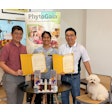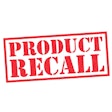
Officials advised that pet food and treat retailers take precautions if they resume selling pig ear dog chew treats. U.S. Food and Drug Administration (FDA) and Centers for Disease Control (CDC) representatives provided a set of nine questions and answers to help pet product retailers and distributors in the wake of the Salmonella outbreak associated with pig ear dog chew treats.
As of October 30, 2019, officials believe the Salmonella outbreak connected to pig ear pet treats seems to be over. FDA CDC started their investigation of the outbreak in July. Later that month, FDA and CDC recommended no pig ear pet treat sale or use in the United States.
The agency now recommends that retailers who wish to re-introduce pig ear pet treats should take appropriate steps to ensure that their suppliers are controlling for pathogens such as Salmonella, and that products are not cross-contaminated after processing.
The following is a question and answer provided by the FDA to help pet food and treat retailers, distributors, importers and others to understand the current situation with pig ear dog chew treats.
1. What should suppliers/retailers do in order to resume selling pig ears?
For retailers who held product in storage awaiting further information from the outbreak investigation, FDA recommends further processing these products to kill any pathogens before they are offered for sale, particularly if they originated from firms on Import Alert 72-03. Alternatively, you may wish to carefully dispose of the pig ear pet treats in a secure container where animals, including wildlife, cannot access them. For more information, see FDA’s page about contaminants in animal food.
Retailers should be aware that selling bulk product or commingling unwrapped product can lead to cross-contamination and impact traceability. As part of its investigation, FDA has learned that many of the treats implicated in cases of illness were not treated to adequately control pathogens. Further, bags of bulk product from several distributors were often mixed together at the retail point of sale, which presented challenges for tracing back product to find the source of the contamination.
Some pig ears implicated in the recent outbreak were individually packaged and apparently irradiated, but still tested positive for Salmonella. When properly conducted, irradiation is effective at removing Salmonella from certain animal foods, including pet treats. However, it is important to ensure that irradiation, when used as a pathogen-control method, is being applied properly such that products are effectively irradiated and not re-contaminated after irradiation.
Whether choosing irradiation or another pathogen control method such as baking, suppliers should ensure that their processes and conditions are validated and verified as effective on their specific equipment and for the particular product. It is important to consider factors such as pathogen contamination levels and water activity when validating process conditions and prevent post-processing re-contamination when cooling and packaging.
2. What responsibilities do manufacturers and suppliers have in controlling for Salmonella?
Firms that are subject to the Preventive Controls for Animal Food regulations under the Food Safety Modernization Act (FSMA) are required to implement Current Good Manufacturing Practices and control hazards, such as Salmonella, that are reasonably likely to occur in their products. These firms are also required to validate and verify the effectiveness of their control steps. There are many ways to control Salmonella hazards, and manufacturers and suppliers are responsible for determining and implementing appropriate preventive controls.
Manufacturers and suppliers who are not required to register as a food facility are not subject to the Food Safety Modernization Act (FSMA) requirements. However, they still have an obligation under the FD&C Act not to adulterate or distribute adulterated food in interstate commerce.
Additionally, importers of animal food, including pig ears used as animal food, must also comply with the Foreign Supplier Verification Program regulations, which makes importers accountable for verifying that foreign suppliers are producing food in a manner that meets U.S. safety standards.
For more information about requirements under FSMA, see Frequently Asked Questions on FSMA.
3. What can retailers do to make sure their suppliers are controlling for Salmonella?
We recommend that retailers ask how their pig ear supplier(s) are controlling for Salmonella and request that they provide information that clearly demonstrates, where applicable, compliance with the Preventive Controls for Animal Food regulations, including how they ensure they effectively and consistently eliminate pathogenic hazards.
Retailers and distributors who are not required to register as a food facility are not subject to the Food Safety Modernization Act (FSMA) requirements. However, they still have an obligation under the FD&C Act not to adulterate or distribute adulterated food in interstate commerce.
4. Is properly performed irradiation effective at removing Salmonella from pig ears?
Properly performed irradiation is effective at removing Salmonella but, as with any pathogen control method, manufacturers should ensure that it is validated and effective for their particular product.
Irradiation is an approved food additive for the treatment of animal diets (including pet treats) under the conditions set forth in 21 CFR 579.22 (Ionizing radiation for treatment of animal diets). Irradiation is one method that can be applied to pet treats for pathogen control, although FDA does not require it or recommend it over other methods.
5. What should retailers and distributors do with product held in their possession at the time the outbreak was announced? Can they ship pig ears for further processing, like irradiation and packaging?
FDA’s advice at the onset of the outbreak was for retailers and distributors to dispose of product in their possession. However, retailers and distributors who wish to sell non-recalled product kept in their possession during the outbreak should take appropriate steps to ensure that it is not contaminated.
If the product has been identified by FDA or a State authority as being adulterated, retailers or distributors who do not want to dispose of product can develop and submit a reconditioning plan to the agency.
If the product has not been identified as adulterated, there is no need to submit a reconditioning plan to FDA. However, retailers and distributors still should take steps to ensure the product is not contaminated before offering it for sale.
Pig ears previously irradiated in accordance with 21 CFR 579.22 cannot be re-irradiated. However, further processing using other methods that can eliminate Salmonella may be an option.
6. Does FDA “approve” or otherwise verify suppliers and/or the effectiveness of their processes?
Firms that are required to register as food facilities should have processes to control pathogens as part of a food safety plan, however, only in situations where a reconditioning plan has been approved by FDA does the FDA verify the processes. Otherwise, it is the responsibility of industry to verify whether their suppliers’ processes are effective at controlling Salmonella. For more information, see CVM’s page about contaminants in animal food.
7. Why did FDA advise retailers not to sell any pig ears?
Due to the nature of these products and how they’re sold – sometimes in bulk, sometimes commingled batches from multiple distributors, and sometimes packaged with limited labeling (for example, without information such as country of origin or irradiation status) we were concerned that consumers and retailers were not able to identify contaminated products. For example, we were concerned that consumers and retailers could not consistently and clearly identify, a) the country of origin, b) whether or not the product had been irradiated or otherwise processed to kill pathogens, and c) whether that irradiation or processing was effective. Given the severity and number of illnesses associated with pig ear pet treats, as well as the expansive timeframe of this Salmonella outbreak (illnesses were identified as covering the period 2015-2019), plus the finding of multiple strains of Salmonella in an individually wrapped pig ear pet treat that was labeled as irradiated, FDA believed the best way to protect public health was for retailers to remove all product from the market while the investigation unfolded.
We believe that the outbreak and the agencies’ response has increased awareness among industry and consumers of the potential for pig ear pet treats to be contaminated with Salmonella, the transmission of Salmonella to people and animals, and the need for industry to take steps to address this potential for contamination. Now that the outbreak has abated, we reiterate industry’s responsibility to ensure that product introduced to the market is not contaminated.
8. Where did contaminated product come from?
FDA identified positive product associated with the outbreak that originated from Argentina, Brazil and Colombia. However, in the course of the investigation, we also identified U.S. product that tested positive for Salmonella and were subsequently recalled. Although the Salmonella found in this product did not match the outbreak strain, this underscores the need for manufacturers, suppliers, and retailers to take appropriate steps to ensure their products are not contaminated.
9. What is FDA doing on this issue going forward?
FDA is continuing to monitor the marketplace as new product is introduced but cannot discuss specific compliance or enforcement strategies. Import Alert 72-03 remains in place and additional firms will be added if and when product testing is positive. The agency will take actions as appropriate to address contaminated product.














